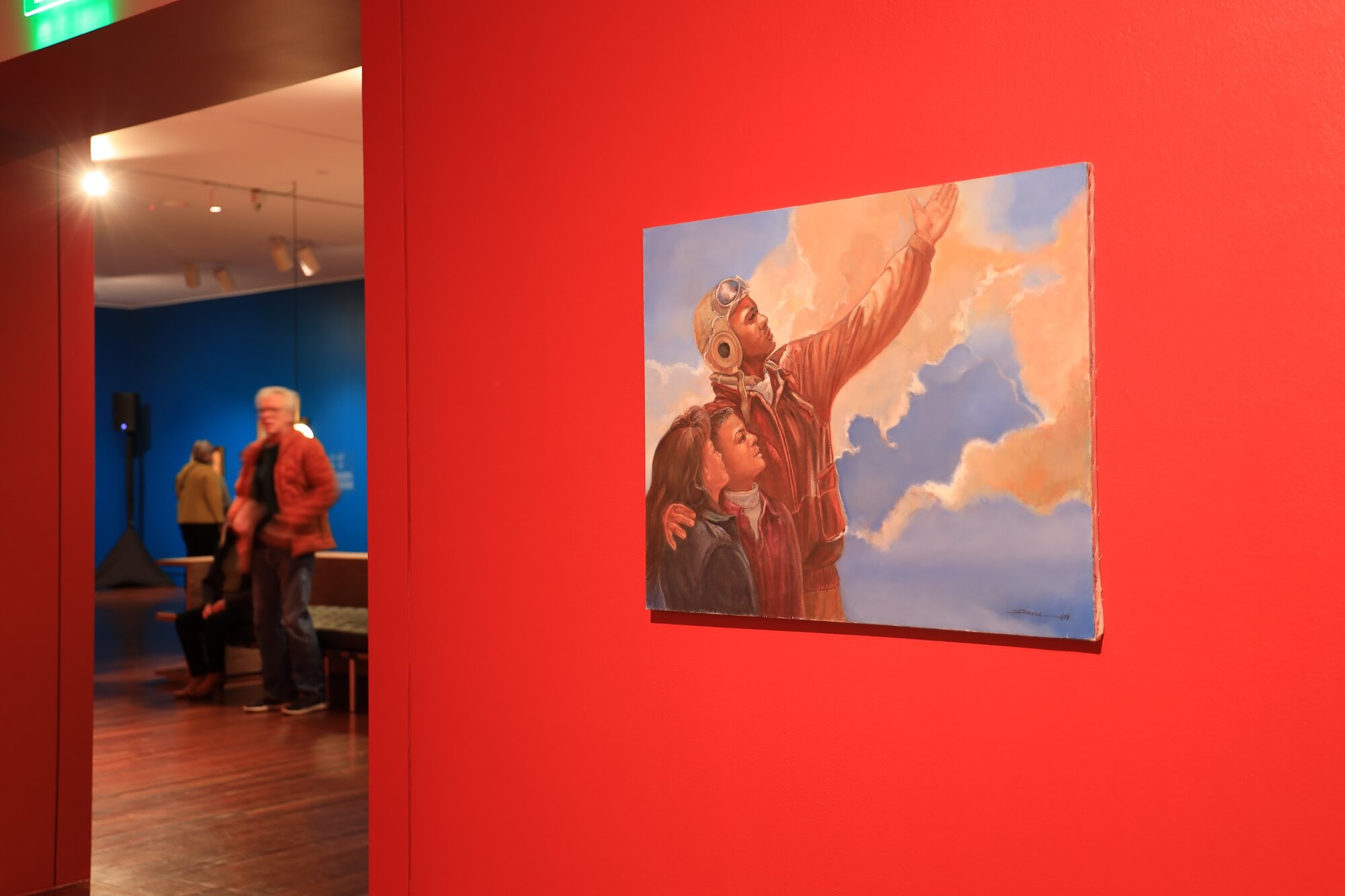‘We really worked as partners:’ Wife of late Tuskegee Airman exhibits his art in Colorado Springs

COLORADO SPRINGS, Colo. — Through the intricate strokes of his paintbrush and his courage in the skies, Tuskegee Airman Lt. Col. Clarence Laudric Shivers, who passed away in 2007, left behind a legacy in both art and military aviation.
Clarence Laudric Shivers began drawing as a child and over the course of his lifetime he featured friends, family, musicians, civil rights leaders, and his wife, Peggy Shivers.
Now, Peggy Shivers has helped curate the new exhibit Clarence Shivers: Experimenting with Form, on display at the Colorado Springs Fine Arts Center through July 6.
“We really worked as partners,” she said of her husband of 38 years.
She remembered Clarence Shivers telling her that teachers would constantly call him out of class because they wanted him to draw for the school bulletin board.
“He did all of the art, all he had to do was buy all the supplies and paint and I took care of everything, which I thoroughly enjoyed! It was a partnership and I loved it! And I think he kind of appreciated having the help too,” Peggy Shivers, 84, said ahead of the art show’s opening in February.
Clarence and Peggy Shivers’ love story dates to 1966. Peggy was introduced to Clarence, a father of four, by her friend Willard King. Her car wasn’t working and King asked Clarence Shivers to drive his working car to Peggy. Peggy said King’s wife was impressed that Clarence would make such a kind gesture.
“[King’s] wife told me later on, she says, ‘Peggy, I knew he loved you, but I didn’t know he loved you that much — nobody drives that car!’ It was a little [Volkswagen] Karmann Ghia,” she said.
From then on, Peggy said she and Clarence were inseparable. They married in November of 1968.
“[We] just had a wonder time, a wonderful life together,” she said.

A close-up of one of Lt. Col. Shivers' paintings on display at the Colorado Springs Fine Art Center.
Photo: Chase McCleary, Rocky Mountain PBS
Peggy Shivers said it was an amazing experience watching Clarence work on his art, like he was in another world.
When he was in the studio, Shivers said she would often bring him a cup of coffee and find that he had never touched it when she checked back on him. He was so deep in thought working on his art the coffee had turned cold.
“He was just an amazing human being with a brilliant mind, and sometimes I would ask him, ‘Clarence, how do you know that?’ He would shrug and say, ‘I don’t know?’ He was just brilliant!” said Peggy Shivers.
The honor of being a Tuskegee Airman gave Clarence Shivers confidence.
“[Clarence] mentions, once he went through the Tuskegee Airman program, he figured if he put his mind to it, he could do anything he wanted, and he proved that a number of times,” she said.
During World War II, the Army Air Corps trained the first African American pilots and flight staff out of the Tuskegee Army Airfield in Alabama. The Tuskegee Airmen proved legendary on and off the battlefield.
Clarence Shivers told Peggy he’d seen German prisoners of war allowed into an American officer’s club while Black officers like himself remained banned from the premises.
“The Tuskegee Airman were actually the cause of President Truman desegregating the military so the [Tuskegee Airman] are all very proud of that,” she said.

As an artist, Clarence Shivers became most well-known for his 1983 and 1986 historic “Civil Rights Leaders,” and “Black Political Firsts” calendars. In 1985 Clarence Shivers designed and sculpted the Tuskegee Airmen statue used as a memorial on the grounds of the U.S. Air Force Academy.
When the couple were stationed in Madrid, Spain, Clarence Shivers became well-known throughout Europe for his paintings of Spanish Guardia and colorful abstracts. One of his paintings was featured in the film “A Piece of the Action” directed by Sydney Poitier.
In Colorado Springs, the Shivers’ established the African American Historical and Cultural Collection at the Pikes Peak Library District and the Shivers Fund at the library to provide scholarships to young people interested in classical performing and visual arts.
“I’m just so proud of everything that [Clarence] has done and it just amazes me that he can bring these ideas out of his head, yeah, I love it all,” she said.
Lindsey Ford is a multimedia journalist at Rocky Mountain PBS. Lindseyford@rmpbs.org.
